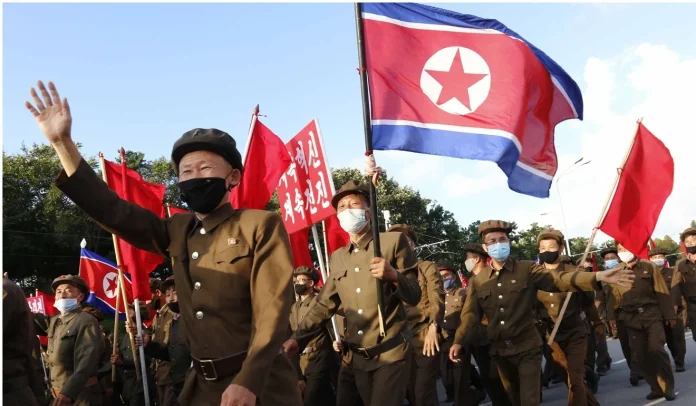North Korea’s state media reported on Wednesday that approximately 1.4 million young people had either applied to join or return to the military in response to escalating tensions with South Korea. The announcement follows a recent drone incident, which Pyongyang blames on Seoul, claiming that the South’s actions have pushed the “tense situation to the brink of war.”
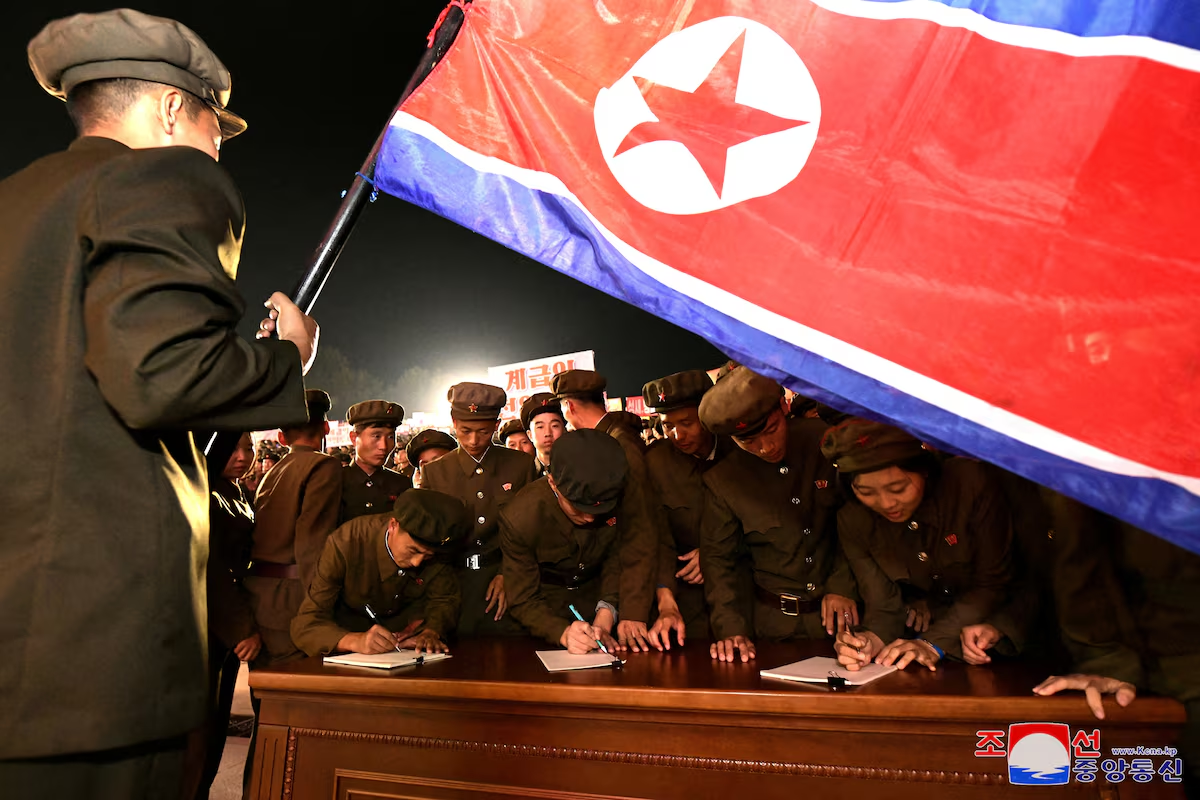
This surge in military enlistment comes in the wake of North Korea accusing Seoul of dispatching drones over Pyongyang. According to North Korean officials, the drones dispersed a “huge number” of anti-North Korean leaflets, which prompted North Korea to retaliate by blowing up inter-Korean roads and railways on its side of the border earlier this week. The North has warned that South Korea will “pay a dear price” for these actions, stoking fears of further escalation.
The 1.4 million young volunteers, including students and youth league officials, reportedly signed petitions to join what state media described as a “sacred war of destroying the enemy with the arms of the revolution.” The official Korean Central News Agency (KCNA) released photographs showing young people signing up to enlist, although the exact location of these sign-up events was not disclosed.
KCNA’s report included stark warnings to South Korea, stating that if war were to break out, the Republic of Korea (ROK) “will be wiped off the map.” The message further declared that North Korea is prepared to “put an end” to the existence of the South, framing the situation as a result of Seoul’s provocation. This fiery rhetoric is not new from the North, which frequently makes unverifiable claims of massive volunteer enlistment during periods of heightened tension.
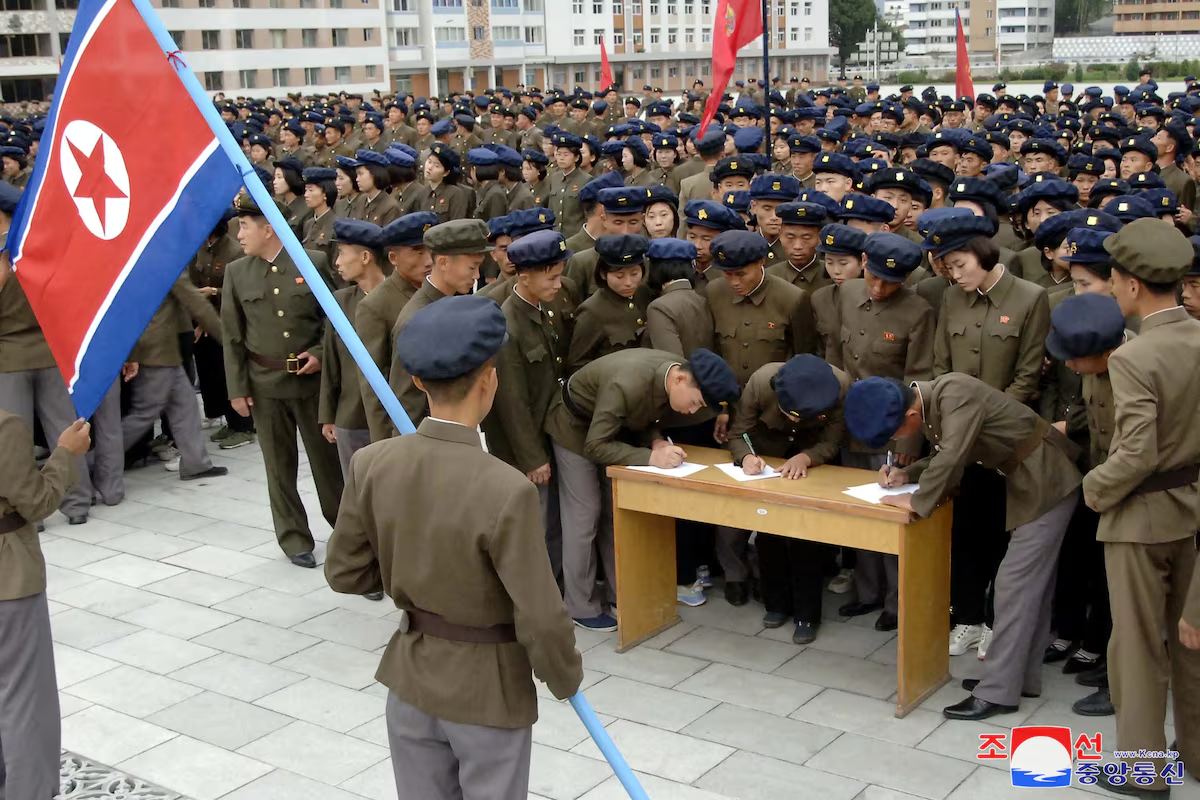
Similar recruitment drives were reported last year when North Korean state media claimed that 800,000 citizens volunteered to fight against the United States. Additionally, in 2017, nearly 3.5 million workers, party members, and soldiers were said to have enlisted during another peak in tensions. The true extent of these claims remains difficult to confirm due to the isolated nature of the regime.
According to estimates from the International Institute for Strategic Studies (IISS), North Korea already maintains a sizable military force, with around 1.28 million active soldiers, 600,000 reservists, and approximately 5.7 million Worker/Peasant Red Guard reservists. These forces are part of the country’s extensive, albeit under-equipped, military infrastructure.
South Korea’s defense ministry did not comment directly on the latest report from KCNA but has previously warned that any harm inflicted on South Korean citizens by North Korea would result in “the end of its regime.”
Growing Tensions and Diplomatic Efforts
Amid the rising tensions, high-level diplomatic discussions are underway. Vice foreign ministers from South Korea, the United States, and Japan are set to hold talks in Seoul on Wednesday to address the mounting threat from North Korea and explore avenues to de-escalate the situation.
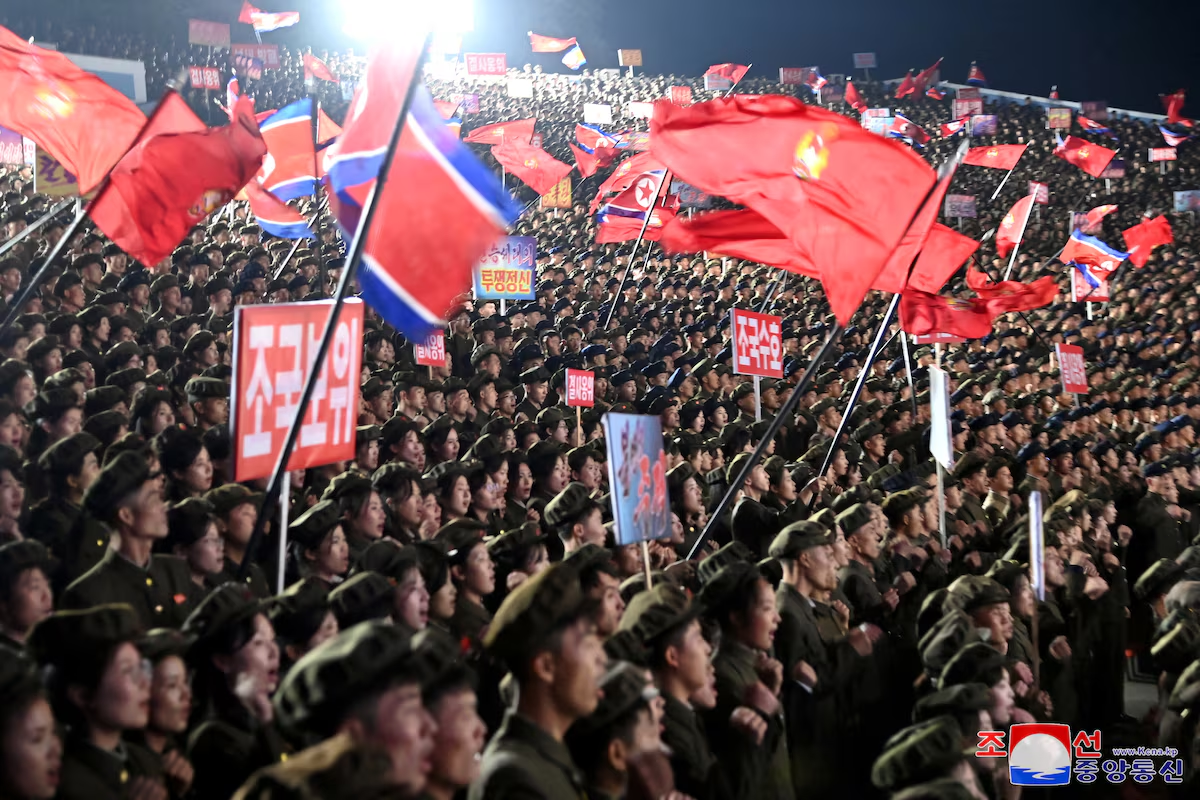
Officials from South Korea’s unification ministry, responsible for managing cross-border relations, suggested that North Korea might be using the drone incident to consolidate internal unity and justify future provocations. The ministry believes Pyongyang is exaggerating tensions to distract from domestic issues, including economic difficulties, and to rally public support.
Some analysts believe that North Korea’s recent aggressive posturing could also be part of a broader strategy to redefine its relationship with the South. Park Won-gon, a professor at Ewha Womans University in Seoul, noted that the North has been increasingly harsh in its rhetoric toward South Korea, using the drone incident to fuel its propaganda campaign. This fits with North Korea’s ongoing push to sever ties with the South and promote a permanent “two-state” system.
Earlier this year, North Korean leader Kim Jong Un declared South Korea a “primary foe” and stated that unification was no longer a viable goal. Since then, North Korea has taken numerous steps to cut off inter-Korean relations, reflecting a broader shift in the regime’s long-term strategy.
Legacy Building and the Future of the Korean Peninsula
Some experts see Kim Jong Un’s actions as part of a larger legacy-building project aimed at permanently reshaping the geopolitical landscape of the Korean Peninsula. Jenny Town, a senior fellow at the Stimson Center, believes that Kim is working to solidify the notion of two separate Korean states, moving away from the long-held goal of reunification.
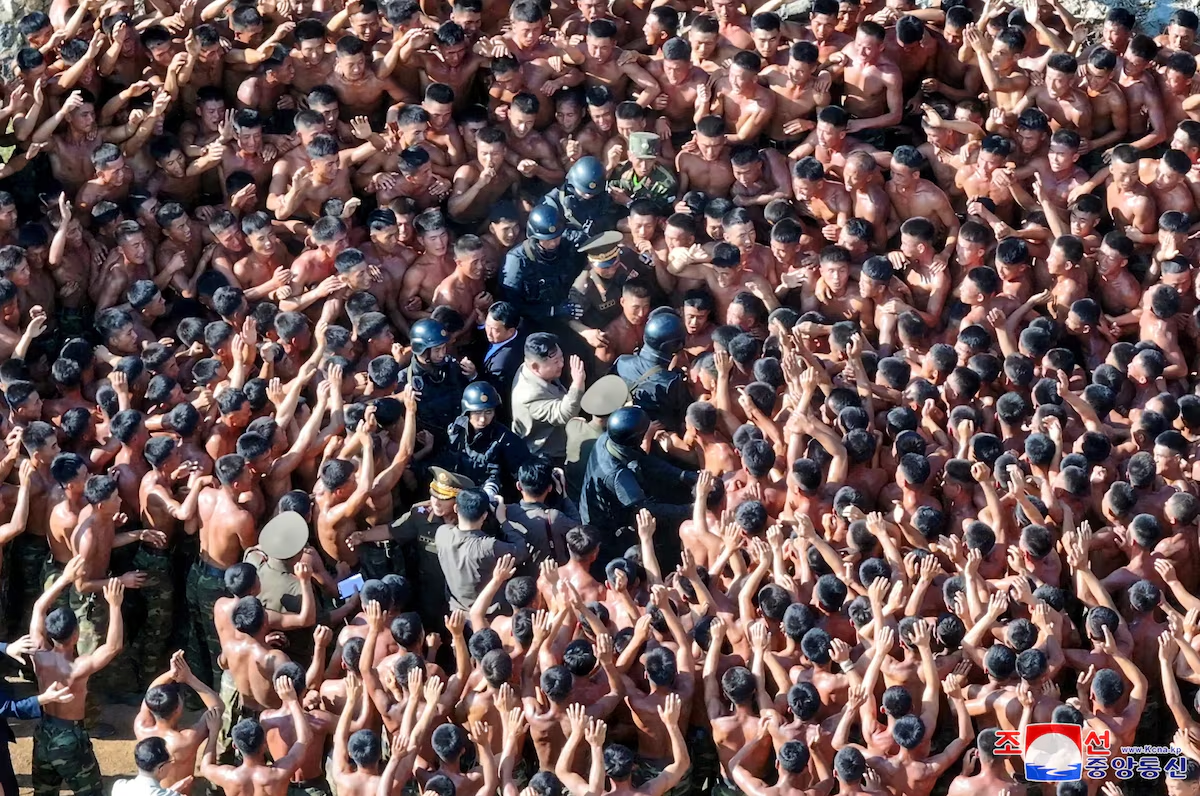
The two Koreas remain technically at war, as the Korean War ended in 1953 with an armistice rather than a peace treaty. Tensions have flared up frequently, with both sides clashing over various issues, including North Korea’s missile tests and South Korean activist groups sending anti-Pyongyang leaflets across the border.
In recent months, balloon launches from North Korea have also added to the strain. Pyongyang has claimed that these launches, which began in May, are a response to anti-regime leaflets sent from the South. The North has responded by sending balloons filled with trash across the border, exacerbating the already fraught relationship between the two countries.
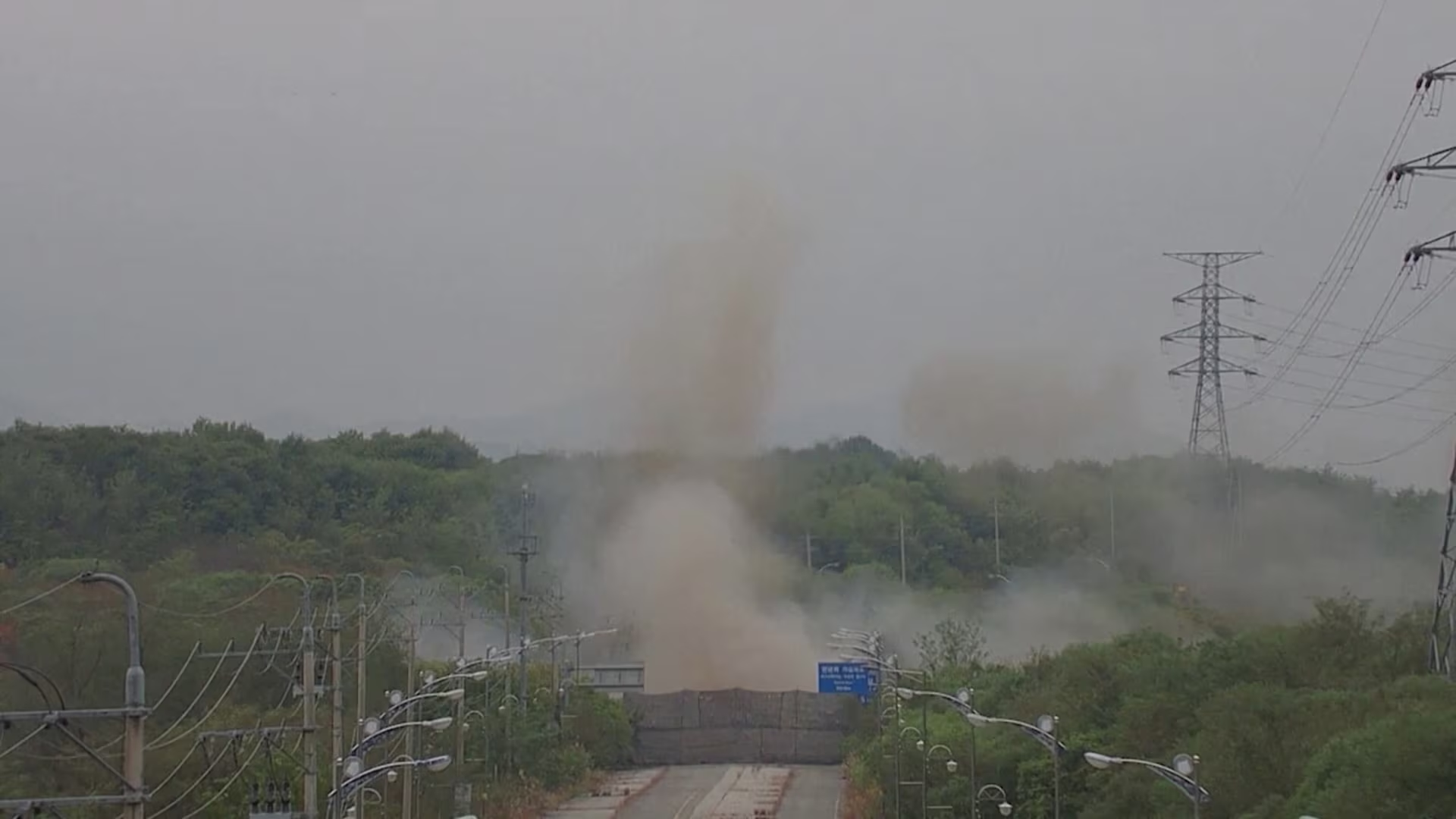
As the situation on the Korean Peninsula grows increasingly volatile, the international community is watching closely for signs of further escalation. The prospect of military conflict remains a very real concern, particularly as North Korea continues to mobilize its population and South Korea prepares its defenses. With diplomatic efforts struggling to take hold, both sides appear locked in a dangerous standoff that could have far-reaching consequences for the region.

